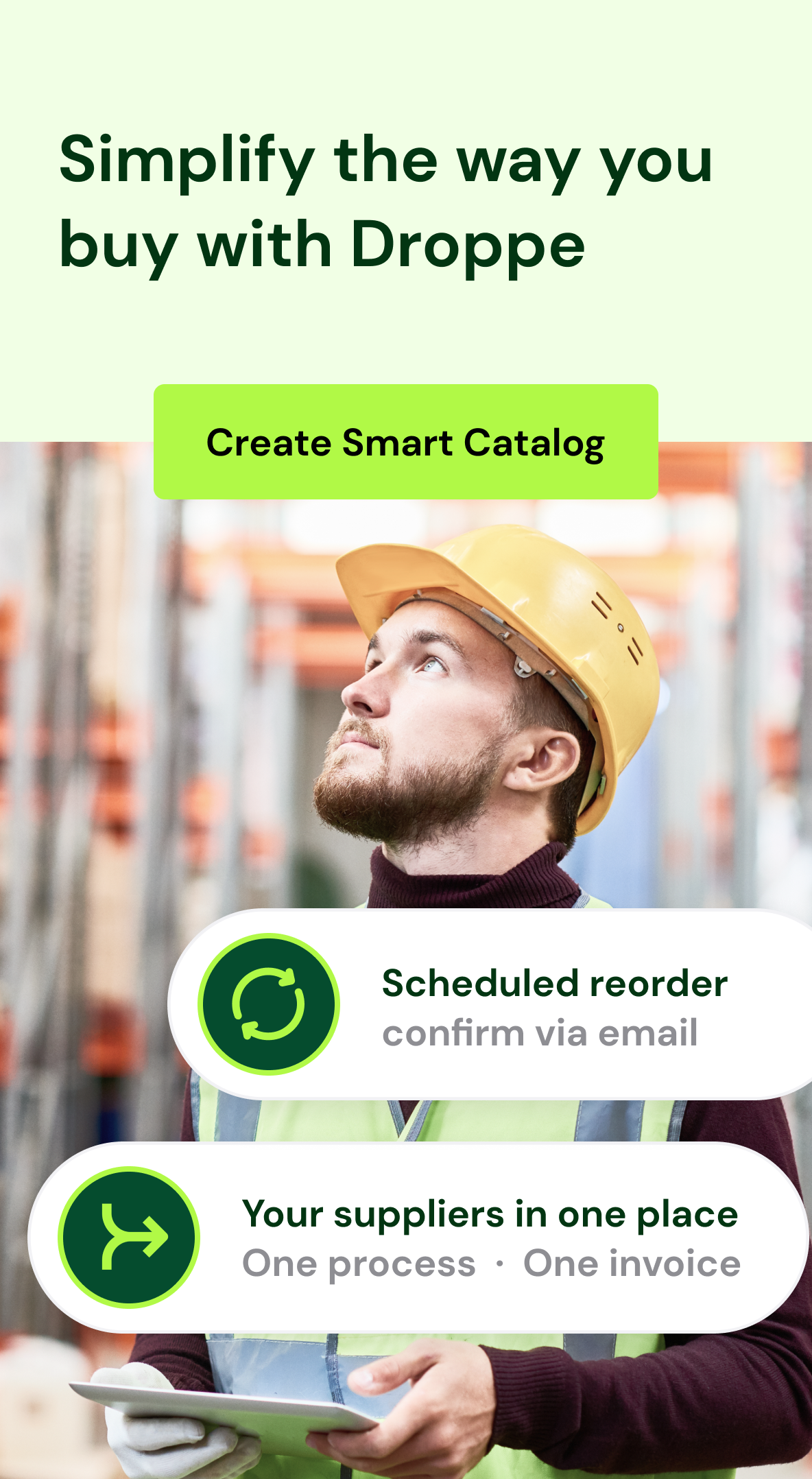Introduction
Procurement has become a strategic activity that drives value and efficiency across an organisation. In today’s data-driven corporate world, procurement teams use digital tools and analytics to acquire insights from procurement data. These insights optimise expenditure, streamline supplier relationships, and link procurement with organisational goals. This article discusses the best procurement reports that maximise value and efficiency, helping firms stay competitive and cost-effective.
Overview of Common Procurement Reports
Procurement departments filter spend data into usable insights using procurement reporting (eProcurement reporting when done using digital tools and sources). Documents with helpful information are reports. Text, tables, and visuals make data easier to understand.
Companies using procure-to-pay optimisation software may create procurement reports on demand, unlike monthly reports.
Typical eProcurement reports include:
With context-based detail, spend reports aid budgeting, audits, and reporting. They may compare actual spend to planned values, provide a real-time financial picture of the organisation, assist manage cash flow, and more.
Supplier base reports track spending, approvals, inventory, use, and more. These reports work best when complete expenditure data is accessible, from purchase requisition to supplier invoice confirmation and payment. Companies may enhance their sourcing strategies to optimise their supply chains for resilience and flexibility while saving money and ensuring business continuity by tracking vendor expenditure.
Category analysis supplier reports are unique. Category management lets firms better understand expenditure, monitor supplier performance and compliance, and engage in innovation and development by classifying, maintaining, and analysing data for resources, commodities, and services.
Accounts payable (AP) reports provide correct committed expenditure, accruals, GRNI, and other spend activity data. AP’s reports and projections will benefit from a company’s precise and thorough procurement data.
Contract management reports examine supplier contracts, auxiliary data, compliance, and performance. Additional guidance helps reduce supply chain bloat, add context-relevant redundancies, and partner with top suppliers for mutual benefits. Procurement benchmarking reports compare actual performance to internal benchmarks, industry standards, and peer performance.
Cost savings programs’ lifetime efficacy and efficiency are assessed using savings lifecycle analysis reports.
Procurement Analytics’ Value
Most eProcurement reports contextualise data using procurement analytics. Spend analytics identify trends, challenges, and opportunities in procurement data and are used to design a procurement plan that addresses all three.
Business analysts that specialised in expenditure analysis used Microsoft Excel spreadsheets, paper records, and manual routines to undertake procurement analysis.
The method has adapted to technology. Automation and analytics have replaced pen, paper, and laborious, error-prone human operations.
A corporation using Planergy, a best-in-class, centralised procure-to-pay solution, has:
- Advanced procurement analytics using AI—machine learning that increases performance and accuracy over time.
- Multiple data sources merged into a common data management platform.
- Process automation reduces delays and human error while improving functionality, speed, and accuracy.
- Instant expenditure data visibility for better forecasting and reporting.
- Faster, easier, and more accurate report templates.
- Speed, safety, and dependability owing to SaaS delivery, built-in data encryption, and mobile-friendly, secure access.
Procurement Analytics Types
Various procurement analytics fall under four expenditure analysis categories:
Diagnostic analytics assist procurement professionals identify long-term patterns, unmet difficulties, and untapped possibilities by mining historical data.
Improve value, performance, compliance, savings, and profitability by using previous data to create new procurement plans and projections.
Diagnostic analytics’ “why and how” becomes descriptive analytics’ “what.” They meticulously explain prior performance.
Predictive analytics look forward. Descriptive analytics clarify previous data, diagnostic analytics mine it for insights, and predictive analytics project future procurement performance.
Prescriptive analytics provide “solutions”. CPOs and other procurement professionals can confidently make strategic, timely, and value-focused business decisions using procurement data and forecasting models.
Analytics gather data from many internal and external sources.
This includes:
The organisation tracks procurement-related KPIs and data, including total cost of ownership, spend under management, and bottom line gains from cost reductions and avoidance.
These factors include supplier availability, fault and compliance rates, purchase order cycle time, and average processing cost.
Internal control and workflow performance management benchmarks.
This includes input from accounting, ERP, office, and CRM systems in the company’s software ecosystem.
External data sources include general internet-based information like currency rates, market movements, and commodities data.
Industry, market, and financial data proprietary.
Supplier industry codes.
Reports on credit.
Profiles of risk.
Government or industry compliance updates.
Social media, mainstream media, and customer feedback on sustainability and ethical company practices and their effects on material, service, and price.
Procurement reports should include analysis from all four areas and use as much relevant data as possible. Clean, precise, and full data from optimised procurement processes delivers the greatest, most strategic insights for strategic planning and decision making.
Creating Procurement Reports from Data
The analysis is simple. When examined in detail, it becomes evident how crucial digital technologies like artificial intelligence and automation are to ideal results.
Phase 1: Data extraction
Data is gathered, organised, and aggregated from all sources into a central database. This data is the “raw ore,” ready to be polished into strategic insights and information.
Phase 2: Clean, Categorise, Enrich Data
This step standardises and organises data, eliminates file format incompatibilities, mistakes, and redundancies, and enriches it using enrichment tools like translation or currency conversion.
Phase 3: Analysis and Reporting
Now cleaned, organised, and accessible, the data may be analysed. The insights may be organised into reports using text, images, and tables to give as much or as little detail as required.
Procurement Reporting Best Practices
A purpose-built P2P system is the greatest first step for procurement reporting cost savings and value generation.
Understanding how to arrange reports and manage data to maximise savings and value is the ideal second step.
Basic best practices can help procurement teams enhance performance.
1. Consider How Procurement Benefits Your Company
Companies that are actively repositioning procurement to create value through enterprise-wide process optimisation and expenditure management will approach it differently from those that use it for strategic direction and holistic value creation rather than cost alone.
Asking questions about the procurement department’s purpose and how to use procurement reporting helps clarify:
Where does procurement fit into the organization’s strategy? Strictly “back office” or “spend cops” or has the corporation integrated procurement data into strategic planning?
Does procurement handle most of the company’s direct and indirect spend?
- Has the firm manufactured? Retailer? Service-based?
- Does procurement collaborate with internal stakeholders who are customers?
- How well do C-suite personnel collaborate with the business functions they lead?
- How much would a catastrophic procurement and supply chain disruption hurt the bottom line and business continuity?
Answering these questions will help you arrange your report. A business that relies heavily on procurement to protect business continuity through the supply chain and the bottom line through cost savings and value will benefit from direct reporting to the CEO or COO and CPO and prioritising enterprise goals.
Companies whose procurement offers strategic counsel and has a good relationship with internal stakeholders may save money by optimising customer spend and prioritising better planning and forecasting for CPO reporting.
2. Make Spending Transparent
Real-time spend data visibility simplifies cash flow and procure-to-pay management. Strategic insights and reporting will benefit procurement organisations that prioritise openness.
- Clarify and enforce procurement policies.
- Record and track the source-to-pay process using KPIs to create benchmarks and adjust procedures.
- Maintain proactive, collaborative supplier relationship, contract, and supplier management. Miscommunication and lack of insight into all sourcing sectors can lead to costly blunders that increase total cost of ownership and destroy savings and value potential.
- Include process and data audits in your workflows to keep data clean and prevent minor issues from becoming large financial or operational issues.
- Value and Savings from Procurement Data
- Your buying activities create tonnes of data daily. Shouldn’t you utilise it? When using procurement data, separate the strategic from the mundane.
For superior data management, procurement analytics and reporting, and expenditure management, invest in procurement software. Your insights will help you optimise operations, give accounts payable reporting data, and save your company money through strategic sourcing and spending.
Conclusion
Effective procurement reporting helps organisations optimise processes, cut costs, and run smoothly by turning raw data into strategic insights. Businesses may improve procurement transparency, efficiency, and resilience by using AI and automation and best practices in procurement reporting. Procurement teams are crucial to corporate success because they can develop and act on real-time data insights to increase value and efficiency.














